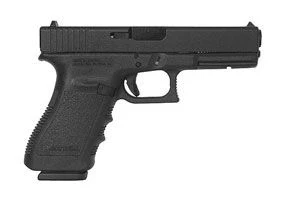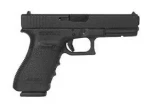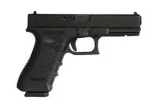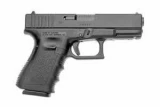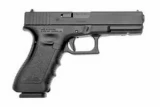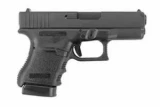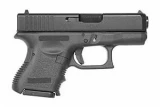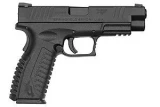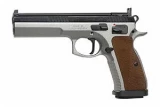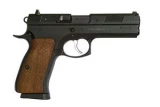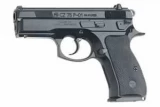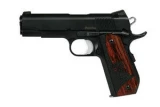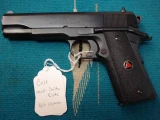Glock 21 vs Radom MAG 95
Put handguns head to head to compare caliber and more.
| vs |
$0.00
|
| Handguns | Glock 21 | Radom MAG 95 |
|---|---|---|
| Summary | ||
| Rating | ||
| Rank | ||
| Action | Safe Action | |
| Caliber | .45 ACP | |
| Capacity | 13+1 | 17+1 |
| Finish | Black | Stainless Steel |
| Sights | Fixed | Front Blade |
| Barrel Length | 4.60" | 4.5" |
| Length | 7.52" | |
| Gun Type | Pistol | Pistol |
| Grip | Black | |
| Weight | 43.83 oz | |
| Details | ||
| Brand | Glock | |
| Reviews | See 20 Reviews | N/A |
| Prices | ||
| MSRP | $648.58 | $0.00 |
| Used Price | $454.01 | $0.00 |
| Sale Price | $583.72 | $0.00 |
Handguns Descriptions
Glock 21
Remarkable for its accuracy and light recoil, the GLOCK 21SF delivers the legendary stopping power of the .45 AUTO round with 10/13 round magazine capacity. Countless law enforcement units swear by the G21SF pistol, and that's why this powerful, lightweight, all climate workhorse is standard issue from the North to South Poles. The SF model reduces the circumference of the receiver at the rear, or "back strap," offering increased comfort and controlespecially for shooters with smaller hands.
Radom MAG 95
The MAG 95 is a Polish 9mm Luger semi-automatic pistol (short recoil operated, locked breech) designed to fire the 9mm Luger cartridge. It was designed by designed by Marian Gryszkiewicz and manufactured by Łucznik Arms Factory (Fabryka Broni Łucznik) in Radom for the Polish Border Guard and Prison Guard from 1995 to 2000. The MAG-95 pistol relies to a large extent on design features from the later Browning designs, and others, combining features from several weapons into one pistol. The locking system is the widely used dropping barrel and cam action of the Browning series. This is combined with a double-action trigger mechanism combined with a hammer decocking lever which allows the external hammer to be lowered in safety when a round is chambered. Only a positive 50 N pull on the trigger will allow the hammer to recock for firing the round. In 1995 the pistol was evaluated by the Polish Army. It had advantages over a competitor, the WIST-94, such as better reliability, durability and safety (better protection against accidental discharge, when dropped). However, the MAG model was rejected by the Army, because it did not meet technical specifications, that were set in late 1993, exceeding mass (800g) and dimensional criteria (190x135x33 mm).

